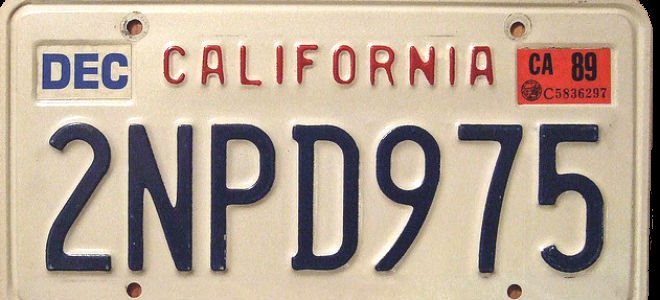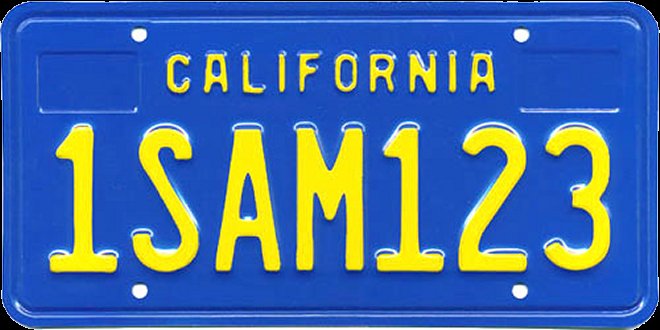
1920. The size
and shape of the state plates were not
consistent, varying from one jurisdiction
to the next. When an owner registered a
vehicle in a new state, they’d have to
drill new holes to support the new plate,
effectively turning their bumpers into
Swiss cheese.

1934

1956. In 1956,
the U.S. government came to an agreement
with the Automobile Manufacturers
Association that fixed the size for
license plates for automobiles at six
inches by twelve inches with standardized
mounting holes, and set a 6-digit
registration number format.

1963. From 1963
to December 1969, California-issued
license plates featured gold numbers on
black a black non-reflective paint with an
embossed state name.

1981. In
January 1970, the base color was changed
to blue with gold lettering. The state
name remained embossed.
In 1980, the standard issue registration
numbers became the modern 7-digit format
with a leading digit that remains constant
followed by a 6-digit serial. Colors
remained the same.

1982. In 1982,
California plates were made white with
blue lettering, and an optional sun
graphic was added behind the state name.
This plate was awarded “Plate of the Year”
by the Automobile License Plate Collectors
Association in 1983.

1989. The sun
graphic was discontinued in 1987, but the
block lettering stayed the same until the
script font we know today was introduced
not long after.

We’ve been stuck with the
character-less white plate with blue
lettering, with California in a red script
font, ever since. Stupid democrats.


